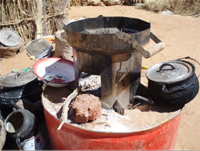-
Creating incentives to purchase disaster insurance
Natural disasters have become more common and more expensive – still, death, injury, and financial losses can be reduced through incentives to purchase insurance and install protective measures
-
-
Engineering lessons of Fukushima
Many engineers and scientists are still examining what happened at Fukushima during the earthqyake and tsunami of 11 March; one group, a Tsunami Loads-and-Effects Subcommittee sponsored by the American Society of Civil Engineers (ASCE), is preparing to publish early next year an approximately 350-page report
-
-
Also noted
NY nuke owner awards $275,000 to first responders * Charlotte inks broadband network deal with Alcatel-Lucent * Japan offers free return flights to revive tourism after Fukishima disaster * FEMA: Insurance Key to Disaster Recovery, But May Not Be Enough * Video: Japan earthquake highlighted ‘lifeline role’ of banking services
-
-
U.K. nuclear plants are safe: report

The United Kingdom has finalized a review of the implications of the Fukushima disaster for the U.K. nuclear power industry; Dr. Mike Weightman, the author of the review, said that the “U.K. nuclear facilities have no fundamental safety weaknesses”
-
-
Tweeting may help in disasters
Social networks like Twitter cannot help prevent disasters, but can quickly correct misinformation resulting from false rumors, thus preventing possible further loss of lives
-
-
"Burying" FEMA in DHS was "huge structural and operational mistake"
Homeland Security NewsWire’s executive editor Eugene K. Chow recently had the opportunity to interview Aden Hogan Jr., the city manager of Evans, Colorado and the former assistant city manager of Oklahoma City during the 1995 terrorist attack; in their interview, Hogan rates FEMA’s response during the recent spate of natural disasters in the United States, problems the agency has had since it became integrated in DHS, and steps that local governments and residents should be taking to better prepare themselves for major disasters
-
-
Australia’s disasters cost insurers $25.6 billion
The series of disasters that struck Australia this year including the Queensland floods, Cyclone Yasi, and the New Zealand earthquake has hit local insurers particularly hard with a combined loss of $25.6 billion
-
-
Safe, efficient cookstoves for earthquake survivors

316,000 people were killed and more than one million made homeless by the 12 January 2010 magnitude 7.0 quake that left the capital city of Port-au-Prince in ruins; many of the displaced Haitians still live in tent cities, where even simple tasks such as cooking are a challenge; scientists hope to find the safest and most energy-efficient way for earthquake survivors to cook
-
-
Evaluating California earthquake forecasts
The Southern California Earthquake Center held a competition among seven different earthquake forecasts; an analysis of the competition shows that earthquake prediction remains an imperfect science, but the best forecasts are about ten times more accurate than a random prediction; the findings should help researchers both develop better earthquake forecasts and improve their tools for assessing those forecasts
-
-
Protecting structures against firebrand attack
NIST engineers have built a device that bellows showers of glowing embers, or firebrands, to test how structures can withstand this destructive aspects of wild fires; in Japan, where the device is now used in a test facility, firebrands are a growing peril that accounts for half of the nation’s ten most costly fires
-
-
U.S. intervention hinders disaster recovery, says reinsurance giant
Lloyd’s of London, the largest reinsurer of U.S. risk, said the federal government’s intervention in the insurance market could hinder recovery efforts following natural disasters; “We don’t believe that the U.S. has the balance between industry and government intervention right, you have government intervention in federal and state level, it demonstrates this is not a sustainable way to proceed,” said Lloyds general counsel
-
-
Disaster scams on the rise
In the immediate aftermath of natural disasters, fraudsters have increasingly rushed in to take advantage of the outpouring of charitable donations; speaking on a panel at an international symposium on organized fraud in Australia, the Department of Justice’s deputy chief for strategy and policy in the Fraud Section of the Criminal Division, said scammers had websites for fake charities in place before predicted disasters had even hit
-
-
Connecticut town considers charging centers for power outages
Following Hurricane Irene which left thousands without power up and down the East Coast, a town in Connecticut is considering building several charging stations for residents to power up their hand held electronics during a natural disaster or prolonged power outage
-
-
Georgia shows app that prepares state residents, guides them to safety
New Ready Georgia mobile app uses geo-location to deliver alerts, create emergency plans, and show shelter locations; from up-to-the-minute weather and hazard alerts based on a user’
‘s location, to customizable emergency preparedness checklists, the app combines a set of features not previously available in one mobile application -
-
Saving victims trapped under concrete
New tool allow first responders to reach those trapped beneath concrete more quickly; the tool generates a high-energy jolt to create a contained hole in the concrete; a series of these holes allows the creation of an area large enough to deliver vital supplies such as food, water, and medicine to victims before first responders are able to get victims to safety.
-
More headlines
The long view
The Surprising Reasons Floods and Other Disasters Are Deadlier at Night
It’s not just that it’s dark and people are asleep. Urban sprawl, confirmation bias, and other factors can play a role.
Why Flash Flood Warnings Will Continue to Go Unheeded
Experts say local education and community support are key to conveying risk.
